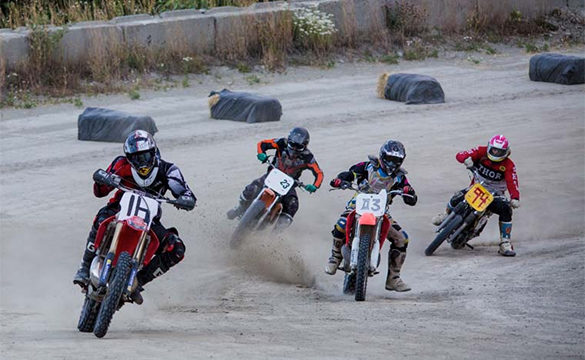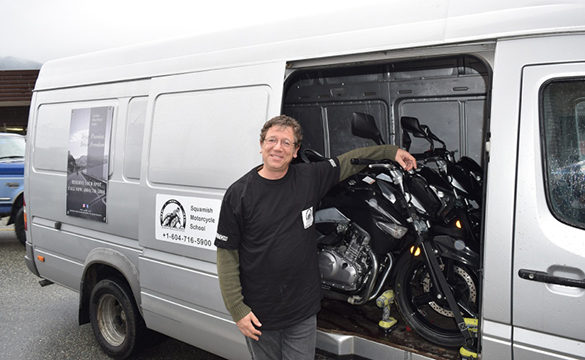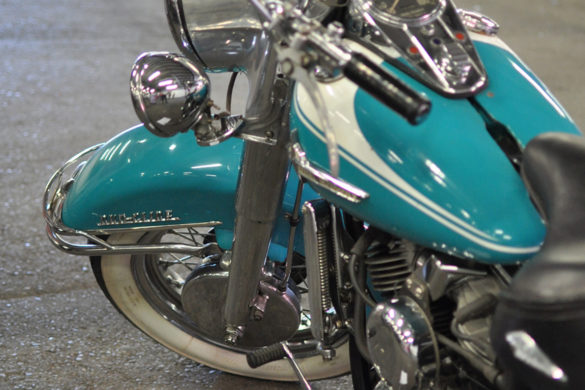Riding a motorcycle for the first time can be a life-changing experience. It suddenly opens a door to new adventures, making new friends and enjoying the scenery of a road trip from a different perspective. However, riding a motorcycle can be dangerous which is why in British Columbia ICBC has created a three step testing process for you to take before you can obtain your Class 6 motorcycle license.
The first step is to pass a knowledge test at an ICBC Driver’s Licensing centre. The next step is to successfully complete a slow speed ICBC Motorcycle Skills Test (MST), and the final step is to pass the ICBC Road Test.
Passing the Motorcycle Skills Test is not easy. In this YouTube video, Ryan Kluftinger from FortNine—Canada’s largest online powersport retailer—opens by saying: “Over one third of candidates fail the motorcycle test.” Taking a training course, practicing the test manoeuvres and reading guides will certainly help improve your chance of passing, but sometimes it’s not quite enough. To find more ways to increase your chance of passing, Ryan went undercover to get some tips from Desmond Rodenbour, an instructor from High Gear Motorcycle Training in Vancouver, about successfully completing the ICBC Motorcycle Skills Test.
Trick #1 – Bright Gear.
While the law requires you to wear a helmet, the rest of the gear you wear is up to you. However, if you show up wearing a T-Shirt, shorts and sandals, the examiner may be inclined to think that you are not concerned with safety. Instead, consider supplementing an all-dark outfit with a fluorescent vest. Wearing proper riding gear will make a much better first impression and, as Desmond advises in the video, “if you come wearing safety gear it will help.”
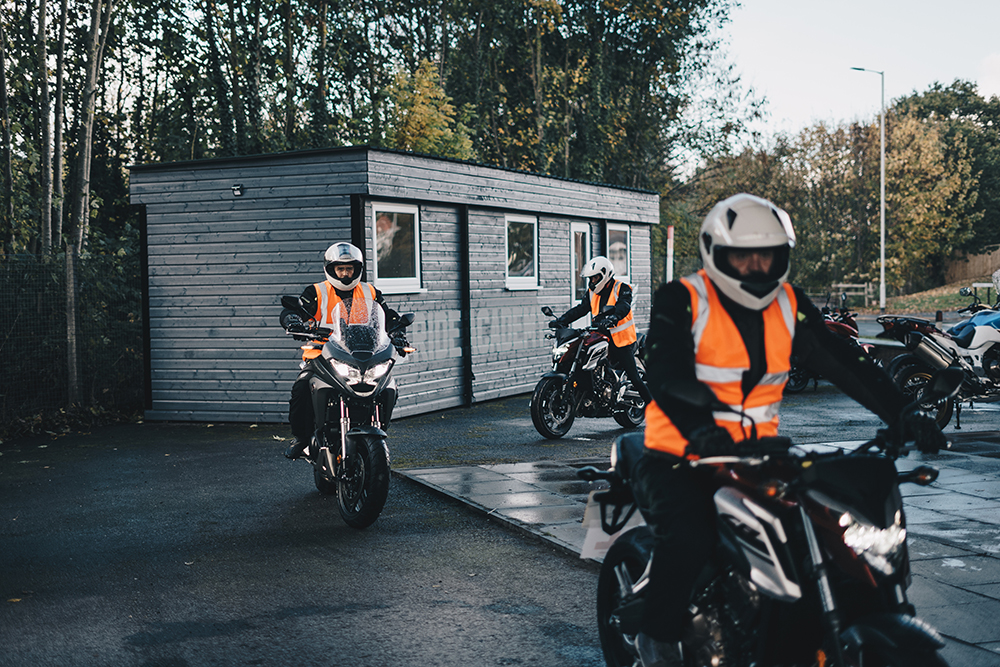
Trick #2 – Drag the Rear Brake
Dragging the rear brake puts more weight on the back of the motorcycle and squishes down the rear suspension. Ryan explains that this “creates low speed but high stability” and helps to ground you. By comparison, using the front brake puts weight on the front end, pushing the forks down and changing your steering geometry which can affect your ability to properly control the motorcycle.
Trick #3 – Listen
Listen carefully to the examiner. Part of the MST is to execute what the examiner instructs you to do, which can be complicated. If you are unsure, ask, because successfully completing the wrong manoeuvre will not help you pass.
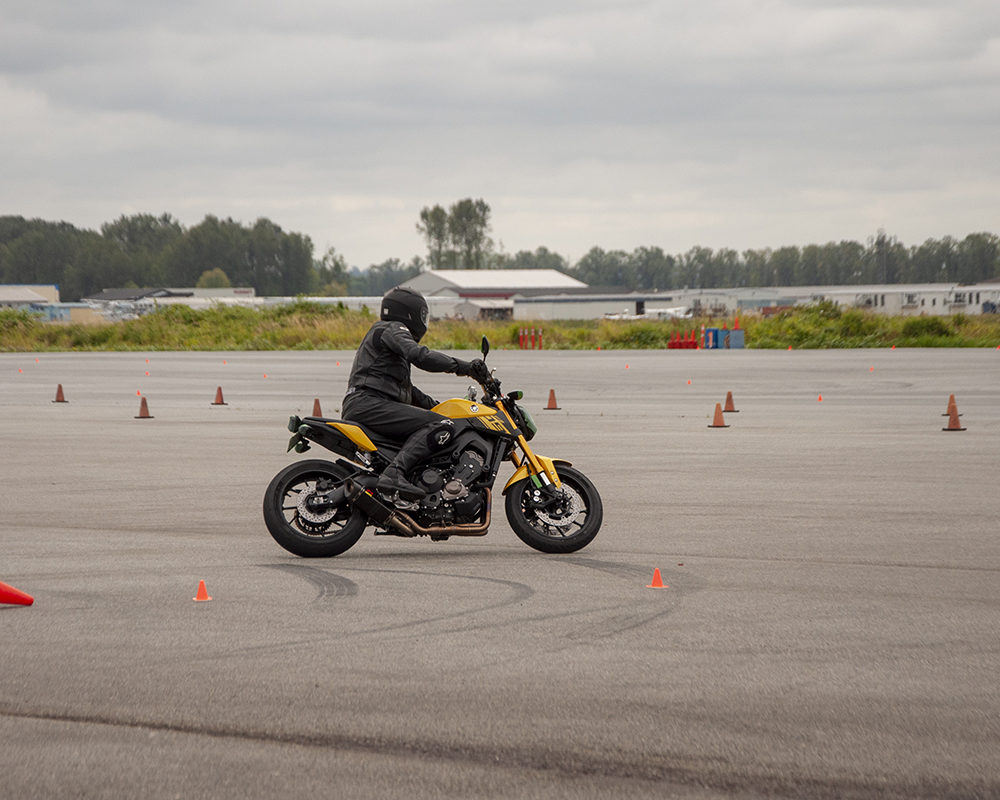
Trick #4 – Speed
A lot of new riders tend to ride too slow, which makes them appear nervous and hesitant about riding the motorcycle and less observant about their surroundings. Also, a motorcycle will tend to remain upright at slower speeds, feel more wobbly, and have a larger turning radius.“It’s actually easier to carry a little speed,” Ryan says. “Float your body over the contact patches, but let the bike fall away through turns.” Riding a little faster can help you find that sweet spot where the forces of gravity and inertia are achieved with the right lean angle.
Trick #5 – Eat a Banana
If you’re nervous and jittery, your throttle and clutch response may look jerky and your braking may seem too harsh. Eating a banana can be beneficial because it contains a variety of vitamins and minerals which can help calm your nerves and allow you to think more clearly.

Trick #6 – Ignore the Cones
A motorcycle tends to go where you look. If you are staring at the cones, your motorcycle could become unstable as your eyes dart from cone to cone. Keeping your head up and using your peripheral vision to view the cones will help you corner better and allow for shoulder checking, showing the examiner you are paying attention to your surroundings.
A lot of preparation is needed before attempting the test, and the best way to get the skills you’ll need is to take a training course. If you live in Vancouver, we have recommendations for riding schools and motorcycle instructors.
Riding a motorcycle is a great way to experience the freedom of the open road without the confines of glass and steel. However, that cage of steel does help to protect you in an accident. Getting the proper training and learning how to ride safely will help you enjoy countless memorable rides.

